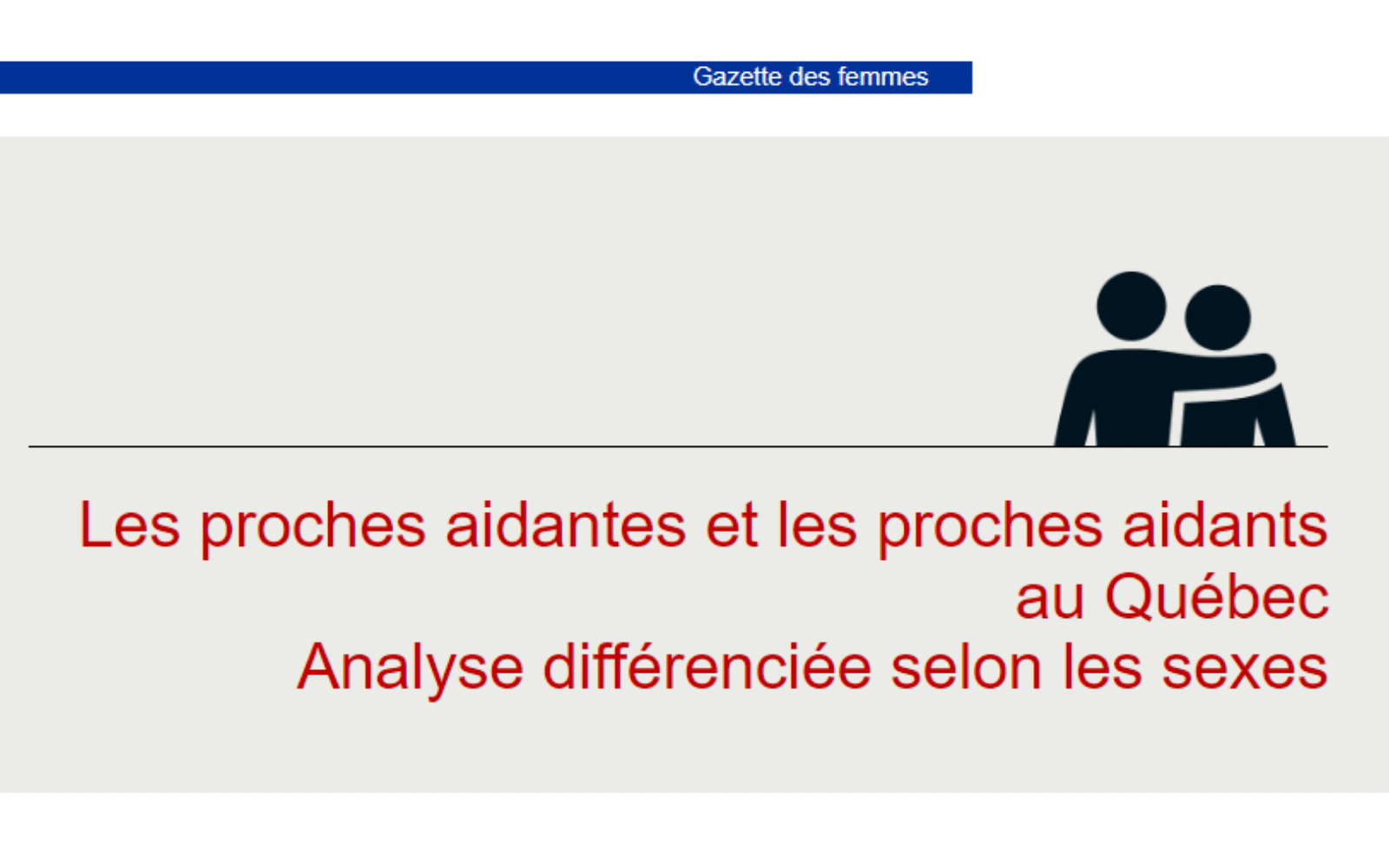This microsite (in French) presents a visual and interactive summary of the report compiled by the Conseil du statut de la femme entitled “Les proches aidantes et les proches aidants au Québec – Analyse différenciée selon les sexes.” It highlights gender-based differences in caregiving situations, defines the term caregiver, draws up a caregiver profile, and looks at types of care provided, the repercussions of caregiving and the government assistance available to caregivers. Lastly, it offers a knowledge-testing quiz.
The microsite is based on data from the 2012 Statistics Canada General Social Survey (GSS) – Caregiving and Care Receiving.
For the latest statistics on caregivers in Quebec, we recommend reading the report (in French) “Qui sont les personnes proches aidantes au Québec et quel type de soutien apportent-elles ? Une analyse différenciée selon le sexe et l’âge.”.





